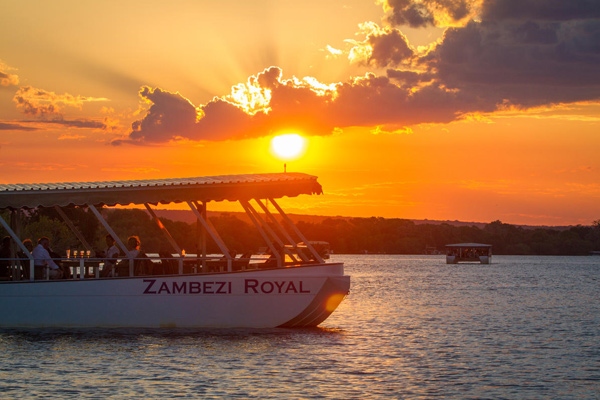A safari in Zimbabwe is amongst the best you can do.The wilderness areas, the animals, the birds and the people are all wonderful.
This landlocked plateau country in southern Africa takes its name from Great Zimbabwe, a fortified trading hub built in medieval times. Zimbabwe is known for its dramatic landscape and diverse wildlife, much of it within the National Parks, Reserves and safari areas.
Zimbabwe's wildlife is one of its jewels.
The country has abundant reserves of minerals, which attracted Cecil Rhodes, the founder of the trading company that led to the British colonization of Zimbabwe and after whom the country was first named.
With rich wildlife, lush vegetation, and exceptional national parks, it is easy to explain why Zimbabwe is one of the top-rated safari destinations in Africa. Here is where game viewing is at its best, flooding you with wildlife experiences and bringing you to a point of wild appreciation.
A safari also uncovers the natural gem of Zimbabwe. As you feast on the wildlife sceneries, you will be overwhelmed by a display of landscape beauty – from the grasslands to the mountain ranges, from the waterholes to the flowing waters. One of the Natural Seven Wonders of the World, The Victoria Falls, is the jewel in the crown and this phenomal site should be witnessed at least once in your life.
Rain - November to March
Temp - Summer avg. 35C, Winter avg. 22C
Language - The official language is English. Local Languages include Shona, Ndebele, Tswana, Xhosa, Chewa, Venda, Tsonga, Tonga
Monetary unit - USD
Visas - Double and Single visas can be obtained at any port of entry. Multiple entry visas must be applied for before travel
Health Requirements - No innoculations required.
Travel Insurance - Recommended

National Parks & Places of interest in Zimbabwe
Victoria Falls
One of the Seven Natural Wonders of the World and a UNESCO World Heritage Site, Victoria Falls is a spectacular waterfall on the border with Zambia. Although the most famous stretches of River Zambezi are in Zambia and Zimbabwe, the river traverses a whopping six countries that include; Zambia, Angola, Namibia, Botswana, Zimbabwe and Mozambique. The Victoria Waterfalls are the largest in the world measuring 5577 feet wide and varies in height from 262- 304 feet and It is estimated that roughly 600 million cubic liters of water hit the ground every minute on the Victoria Waterfalls. The months of January through April are considered the ‘flood’ months where the most water flows over the Falls and forms unbelievable clouds of spray spreading kilometers into the air. During the months of September to December, tourists enjoy 'toying with danger' on the edge of the waterfalls at the naturally formed Devil's Swimming Pool.
The Zambezi river that forms the Victoria Water Falls is the fourth largest African River after River Nile, River Congo and River Niger. Sunset Cruises and canoeing safaris are two highlighted activities to partake in on the upper river, whilst the river below the Falls is considered the biggest and best one day white water rafting in the world.
Hwange National Park
The largest game park in Zimbabwe, borders with Botswana and is found along the main road to Victoria Falls in Northwest Zimbabwe.In 1928 the park was first founded as a game reserve, and in 1961 it was designated a national park. There are a variety of camps in the park where visitors can stay, including luxury bush camps.
There are 480 kilometers of roads in Hwange National Park, some of which must be closed during rainy season. Night driving through the park is not allowed.
Wildlife that can be seen in Hwange National Park includes elephants, giraffes, hippos, buffalos, zebras, wildebeests, lions, leopards, cheetahs, hyenas, wild dogs, antelopes, and gemsbok, and is home to one of the world's largest elephant populations, estimated to be as high as 30,000. Due to poaching there is very few Rhino left in Hwange National Park so this is a very rare siting.
Lake Kariba and Matusadona National Park
Located on the Zambezi River, Lake Kariba is one of the world's greatest man-made lakes. As a reservoir, Kariba holds some 180 billion tons of water at any time. The Dam was built in the 1950’s for hydro‐electric power generation and was officially opened in 1959.
Operation Noah, a 5‐year wildlife rescue operation, rescued over 6,000 animals, most of which were relocated to the Matusadona National Park whilst the Lake filled up upon completion of the Dam. Besides wildlife, a large number of families were relocated and homed in new towns and villages, now on the shores of the Lake such as Kariba, Binga, Mlibizi and Siavonga. The filling of the Lake between 1958 and 1963 caused more than 20 earthquakes of greater than 5 magnitude on the Richter Scale. The Lake soon became a tourist attraction on both the Zambian and Zimbabwean side of the Lake, frequented by local and international visitors. Kariba has many mooring opportunities both on the mainland and on islands and offers romantic spots with idyllic waterfalls in places like the Sanyati Gorge.
The Matusadona National Park is the centrepiece in this beautiful landscape surrounding the lake. Kariba also has the most incredible birdlife to be found, rivalled only by the Okavango Delta in Botswana
Mana Pools National Park
This unique park is a WORLD HERITAGE SITE, based on its wildness and beauty, together with the wide range of large mammals, over 350 bird species and aquatic wildlife. Mana Pools is one of Zimbabwe's most popular parks, and it is easy to see why it falls into this profile.
The name "Mana'' means "four" in the local Shona language. This applies to the four large pools inland from the Zambezi River. These pools are the remnant ox-bow lakes that the Zambezi River carved out thousands of years ago as it changed its course northwards. Hippopotamus, crocodiles and a wide variety of aquatic birds are associated with the pools. ''Long Pool'', is the largest of the four pools, extending some six kilometres in a west-east direction. This pool has a large population of hippo and crocodiles and is a favourite for the large herds of elephant that come out of the thickly vegetated areas in the south to drink.You can take in the stunning landscapes, try a canoe trip along the Zambezi River to view the big game or go on a walking safari.
Matobo Hills National Park
An area scattered with huge piles of granite boulders, Matobo Hills National Park has some of the region's most breathtaking scenery and occupies a total area of 44 500 hectares. Established in 1953, the Park was awarded Unesco World Heritage Status in June 2003. Matobo meaning 'bald heads' was the name chosen for the area by the great Ndebele King, Mzilikazi. He is buried in the Matobo Hills just a short distance from the park.
Matobo National Park is also the site of the grave of Cecil John Rhodes. He is buried at the summit of Malindidzimu -' hill of benevolent spirits'. He referred to this hill as having a 'View of the World'. A short walk from the parking lot will lead the visitor to his grave, which is carved out of the solid granite hill and surrounded by a natural amphitheatre of massive boulders.
The Park is home to a wide variety of animal species including: black and white rhinoceros, zebra, wildebeest, giraffe, kudu, eland, sable, klipspringer, leopard, hyena, cheetah, hippo, warthog, rock dassies, waterbuck, wildcat, springhare, common duiker, crocodiles, baboons and monkeys as well as being a hikers paradise.
Chizarira National Park
Chizarira National Park is a remote region overlooking the Zambezi Valley best explored by walking and 4WD game drives. The rugged terrain dotted with gorges and ravines attracts those who take walking and safaris seriously.
Gonarezhou National Park
Gonarezhou National Park is situated in the south eastern lowveld of Zimbabwe and covers an area in excess of 5 000 square kilometres. "Gonarezhou" meaning "Place of many Elephants" is an extremely scenic Park full of rugged and beautiful landscapes. Three major rivers - The Save, Runde and Mwenezi - cut their courses through the Park, forming pools and natural oases from which hundreds of species of birds, wildlife and fish gather to feed and drink. As its name implies, Gonarezhou is famous for its elephants, and many of the largest-tusked elephants in the region maybe found within the Park.
Gonarezhou National Park is part of the Great Limpopo Transfrontier Park (GLTP), a massive Pan-African Park that includes South Africa's famed Kruger National Park and Mozambique's Gaza. This huge area is set to become one of the finest "peace parks" in the world and is dedicated to conservation, biodiversity and the economic development of the surrounding local communities. The vast and diverse nature of the mega-park will provide world-class eco-tourism to the visitor and strive to re-establish historical animal migration routes and fragile regional ecosystems. The combined Park will include more than 500 species of birds, 147 species of mammals, at least 116 species of reptiles, 34 species of frogs and 49 species of fish.

PAWS - PREMIER AFRICAN WILDERNESS SAFARI
PAWS is our premier 19 day, 3 country safari. You start your safari in cosmopolitan Cape Town, where you have 3 days to explore the region, climb Table Mountain and do a spot of wine tasting. No time to nurse any hangovers, as you are now off to Botswana and the the pristine wilderness of the Okanvango Delta and the Linyanti Reserve. You will be hosted and guided by top teams. 90kms to the east the Victoria Falls plunges into the gorge. Its your choice here, go large with the adrenaline adventures or relax at The Victoria Falls Hotel with a sunset cruise. The last part of the safari concludes in the private Sabi Sands Reserve to the west of Kruger National Park. PAWS is an action packed safari with plenty of time to relax between activities.
>> DOWNLOAD PDF
CLAWS - CLASSIC AFRICAN WILDERNESS SAFARI
CLAWS is a classic 14 day Southern African safari adventure. You will start in Johannesburg with an overnight aclimatization night in a local hotel. On day 2 you will hop onto your scheduled flight to Maun, Botswana. Transfer to your bush pilot and off you go into the Okavango Delta. After 5 nights exploring the plains, islands and waterways you’re back onto a small plane and heading for Linyanti and there after the Savuti.
>> DOWNLOAD PDF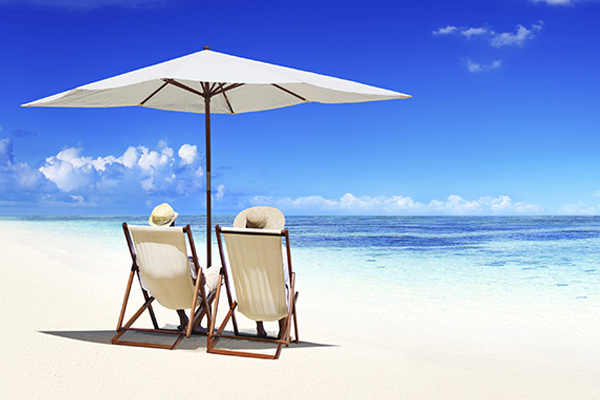
HONEYMOON SAFARI
Victoria Falls, Zimbabwe - Linyanti Concessions - Okavango Delta - Johannesburg - Bazaruto Archipelago
13 Days / 12 Nights
>> DOWNLOAD PDFZimbabwe is a classic safari destination with wonderful game experiences in the west of the country. The Victoria Falls is bucket list destination. Once in Victoria Falls, there are a multitude of activities to take part in.
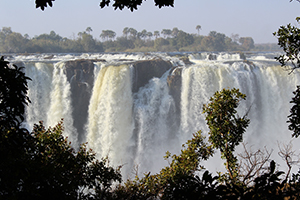










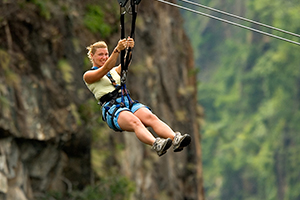






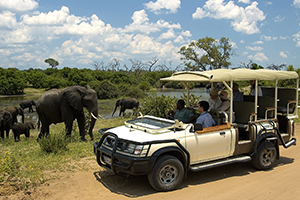










I could not imagine a trip to Africa without you both, but then we have mightily spoiled. The places you have booked us into are unbelievable. Not only are they most luxurious and beautiful, but those associated with the "camps" are knowledgeable--fabulous guides--and well trained in the art of serving and caring for guests--excellent dining as well. I know that you have researched each site, usually having been there yourselves. Your services are soooo complete and personal with every detail attended to. We all loved the "flip" itinerary book you did this past trip. And Sid does the best job in arranging for sightings of ALL the animals many times. What's more, you make it all such fun!
Tom & Lyndie Lamson, USA – South Africa and Zimbabwe










